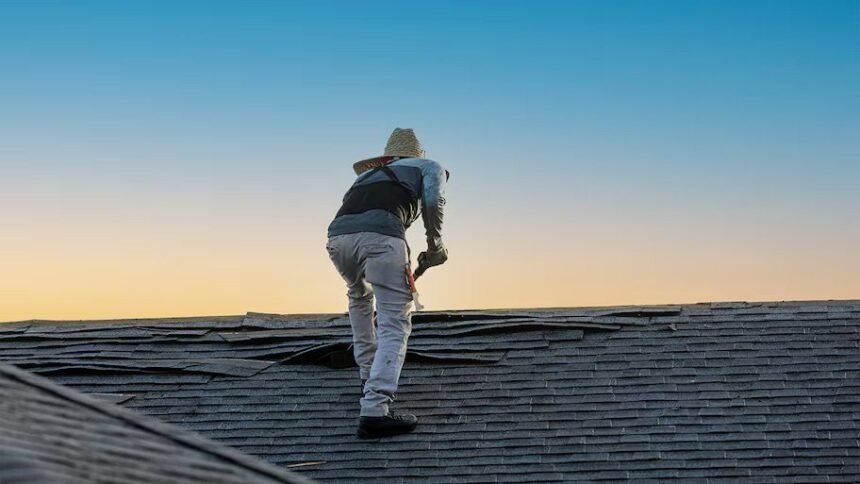Roof installation is one of the most significant investments you’ll make as a homeowner. While most people focus on the obvious costs like materials and labor, there are plenty of hidden expenses that can catch you off guard. Failing to prepare for these can lead to overspending or delays in the project.
This blog will uncover these unexpected expenses, explain why they occur, and provide practical tips to help minimize or avoid them altogether. Whether you’re getting ready for a roof installation or just exploring your options, this is a must-read guide to stay one step ahead.
Why Roof Installation Costs Add Up
Before we get into the detailed breakdown of hidden costs, let’s talk about why roof installation prices can sometimes feel overwhelming. Roof installation involves much more than just replacing shingles or tiles. It entails removing the old roof, preparing the base structure, and customizing it to fit local regulations and weatherproofing standards.
These complexities create opportunities for costs to spiral out of control if you’re not fully informed. By identifying potential pitfalls early, you can better budget for your roofing project.
Top 6 Hidden Costs of Roof Installation
1. Structural Repairs
One of the most common surprises during roof installation is the need for structural repairs to the roof deck or supporting framework. If your home has suffered water damage, pests, or age-related wear and tear, issues will show up when the old roofing materials are removed. Repairing rotted wood or reinforcing weak areas can quickly add hundreds (or thousands) to your bill.
How to Avoid: Request a thorough pre-inspection from a professional roofer before starting. They can check for underlying issues before you’re deep into the project. If structural repairs are necessary, at least you’ll know upfront.
2. Permits and Inspections
Every city and municipality has specific building codes that need to be followed for roof installations. This often means paying for permits and scheduling inspections to ensure your roof is installed according to local standards. Many homeowners underestimate these fees.
How to Avoid: Before starting your project, consult with your contractor about permitting costs and processes in your area. A reputable roofer will handle this on your behalf, but make sure the costs are included in your quote.
3. Tear-Off Costs
If you’re replacing an old roof, the materials need to be removed and disposed of before the new installation begins. This tear-off process often comes with its price tag. Additionally, disposing of old roofing materials (especially asphalt shingles) can incur landfill or recycling fees.
How to Avoid: Some roofers offer free tear-off and disposal as part of their services, so shop around and read the fine print in your contracts. Additionally, ask if any materials can be recycled or reused to reduce disposal fees.
4. Upgraded Materials
When looking at roofing options, it’s easy to fall for the allure of high-end materials like slate tiles or metal panels. While these materials are durable and visually striking, they come with a higher price tag compared to standard asphalt shingles.
How to Avoid: Set clear expectations for your budget and stick to them. Compare the pricing of different materials, and don’t hesitate to ask your contractor for advice on affordable but durable options that meet your needs.
5. Weather-Related Delays
Unpredictable weather is another factor that can influence roof installation costs. For example, abrupt rainstorms, strong winds, or freezing temperatures can delay the project. The longer delays persist, the higher the labor costs may climb to complete the job.
How to Avoid: Schedule your roof installation during a season with favorable weather conditions. Spring and early fall generally provide stable conditions in most regions. Monitor the weather forecast as installation dates approach to minimize potential setbacks.
6. Additional Flashing and Ventilation
Many roofs require upgrades to flashing and ventilation systems during installation to ensure longevity and prevent leaks. These costs often aren’t included in initial quotes unless specified.
How to Avoid: Discuss ventilation and flashing requirements upfront with your contractor. Make sure these details are included in the quote to avoid unexpected add-on expenses halfway through the project.
How to Budget Effectively for Roof Installation
While unexpected costs during roof installation may be inevitable, smart budgeting can help you prepare for these surprises without blowing your budget. Here are a few practical tips:
- Build a 10-15% Buffer: Always include a contingency fund in your roofing budget to handle emergencies like structural repairs or weather delays.
- Request a Detailed Quote: Work with a reputable contractor who will break down the cost of materials, labor, disposal, and additional expenses in their estimate.
- Shop Around: Compare at least three contractor quotes and ask for recommendations from friends or online communities like Nextdoor.
- Prioritize Quality: While it may be tempting to cut corners with cheaper materials or labor, remember that a subpar roof can lead to costlier repairs in the long run.
Why Choosing the Right Contractor Matters
One of the biggest factors in avoiding hidden costs is hiring an experienced and trustworthy roofing contractor. A skilled roofer can anticipate potential problems and build solutions into your project plan, saving you time, money, and stress. They’ll also be transparent about pricing and ensure all elements of the project are clearly outlined.
Take the time to investigate contractors before signing on the dotted line. Read reviews, ask for references, and verify their licensing and insurance.
Wrapping Up Your Roof Installation
Roof Installation is a major investment that, when managed properly, delivers long-term protection, energy efficiency, and increased property value. With careful planning, it doesn’t have to become a financial burden.
Understanding hidden costs like structural repairs, tear-offs, permitting, and weather delays helps you set realistic expectations and avoid budget surprises. Work with a trusted contractor, allocate a contingency fund, and focus on quality over shortcuts. The result? A stress-free experience and a high-performing roof built to last.








